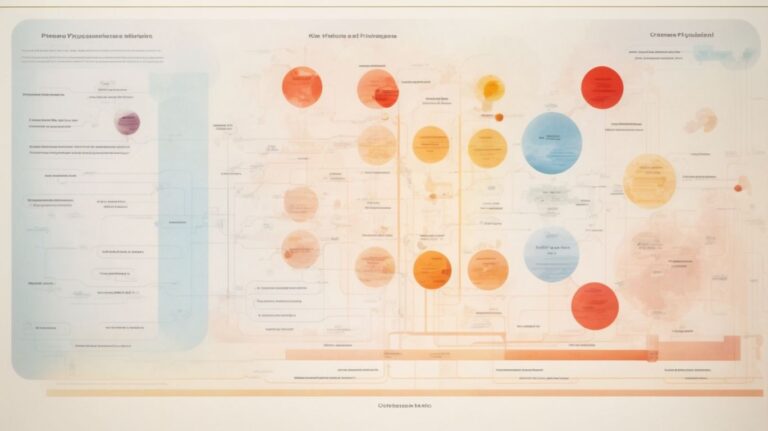Have you ever wondered what extinction means in the field of psychology? In this comprehensive article, we will explore the different types of extinction, its causes, symptoms, and its impact on behavior and emotions.
We will also delve into how extinction is measured and the various treatments and therapies used to address it. We’ll discuss the relationship between extinction and other psychological concepts such as reinforcement, memory, and forgetting. Join us as we unravel the fascinating world of extinction in psychology.
Contents
- 1 Key Takeaways:
- 2 What Is Extinction in Psychology?
- 3 What Are the Causes of Extinction in Psychology?
- 4 What Are the Symptoms of Extinction?
- 5 How Is Extinction Measured in Psychology?
- 6 What Are the Treatments for Extinction?
- 7 How Does Extinction Relate to Other Psychological Concepts?
- 8 Frequently Asked Questions
Key Takeaways:
- Extinction in psychology refers to the process of diminishing or erasing a learned behavior or response.
- Environmental and psychological factors can contribute to extinction, which can result in changes in behavior, emotions, and learning.
- Extinction can be measured and treated through various therapies and strategies, and it is connected to concepts such as reinforcement, memory, and forgetting.
What Is Extinction in Psychology?
Extinction in psychology refers to the process of eliminating or weakening a conditioned response by discontinuing the association between the conditioned stimulus (CS) and the unconditioned stimulus (US).
It is a fundamental aspect of Pavlovian conditioning, where the previously learned association between a neutral stimulus and a significant event is gradually diminished through repeated exposure to the neutral stimulus alone.
This process involves the weakening of the neural connections that were initially established during the acquisition phase of conditioning.
Studies have shown that neurotransmitters like glutamate and dopamine play crucial roles in the extinction process.
Research conducted by Amano and Unal Paré has contributed significantly to our understanding of the underlying neural mechanisms involved in extinction.
What Are the Different Types of Extinction?
In psychology, different types of extinction are recognized, including classical extinction and operant extinction, each involving distinct behavioral and learning processes.
Phenomena such as context renewal and spontaneous recovery further illustrate the complexities of extinction in various psychological contexts.
Classical extinction refers to the process by which a conditioned response decreases or disappears when the conditioned stimulus is presented without the unconditioned stimulus.
This type of extinction plays a vital role in understanding how certain phobias or fears can be unlearned through exposure therapy.
Operant extinction, on the other hand, occurs when a previously reinforced behavior no longer produces the reinforcing consequence, leading to a decrease in that behavior.
Understanding these variations of extinction is important in behavioral therapy and addiction treatment, as it offers insights into diminishing maladaptive behaviors.
Context renewal pertains to the phenomenon in which an extinguished response reappears when the individual is placed back in the original context or environment where the extinction occurred, shedding light on the role of environmental cues in behavior modification.
Spontaneous recovery involves the reappearance of an extinguished response after a period of time has passed without exposure to the conditioned stimulus, highlighting the enduring nature of some learned behaviors.
These intricate nuances of extinction underscore the dynamic interplay between learned behaviors and their environmental context within psychological research and clinical practice.
What Are the Causes of Extinction in Psychology?
The causes of extinction in psychology are attributed to a combination of environmental and psychological factors that influence the process of behavior weakening and response suppression.
These factors encompass neural mechanisms involving the amygdala, prefrontal cortex, and the interplay of neurotransmitters crucial to the extinction process.
Understanding the environmental and psychological influences on behavior weakening is essential in comprehending the process of extinction in psychology.
Environmental factors, such as exposure to stressors or traumatic experiences, can impact an individual’s ability to adapt and weaken conditioned responses.
On the other hand, psychological factors, including cognitive processes and emotional regulation, play a significant role in the extinction process by modulating the way individuals perceive and respond to stimuli.
The neural underpinnings further elucidate the intricate mechanisms at play, with the amygdala being implicated in encoding emotional memories and the prefrontal cortex involved in regulating fear responses.
Neurotransmitters like GABA, NMDA, and dopamine orchestrate the neural signaling that underlies the extinction of conditioned behaviors.
By examining these multifaceted influences, researchers and practitioners can develop effective interventions to facilitate the extinction of maladaptive behaviors and enhance psychological well-being.
What Are the Environmental Factors That Contribute to Extinction?
Various environmental factors contribute to extinction in psychology, particularly within educational settings like the classroom, where learning and associative processes play a significant role in behavior modification and response weakening.
The contextual dynamics and learning environment significantly shape the extinction outcomes in such scenarios.
The physical layout of a classroom, including seating arrangements, lighting, and noise levels, can affect extinction outcomes.
Additionally, cues and prompts in the learning environment can either facilitate or hinder the extinction process. Social interactions and peer behavior in the classroom also play a significant role in shaping extinction outcomes.
The educator’s teaching style and the reinforcement schedules used can greatly impact the extinction of learned responses among students.
What Are the Psychological Factors That Contribute to Extinction?
Psychological factors, including those related to post-traumatic stress disorder (PTSD), behavior conditioning, and the function of critical brain regions like the amygdala and hippocampus, significantly contribute to the process of extinction in psychology.
The interplay of neurotransmitters within these psychological contexts further influences the dynamics of behavior weakening and response suppression.
Reinforcing these psychological processes, NMDA receptors play a pivotal role in the formation and extinction of fear memories.
The involvement of the amygdala in fear conditioning and its subsequent responses elucidates its critical function in the process of extinction.
The modulation of GABA and dopamine systems within the ventromedial prefrontal cortex serves as an essential mechanism in the regulation of fear extinction.
What Are the Symptoms of Extinction?
The symptoms of extinction manifest through observable behavioral changes, emotional effects, and alterations in learning and response patterns.
These symptoms reflect the impact of the process of behavior weakening and conditioned response suppression on an individual’s cognitive and emotional dynamics.
Observing the symptoms of extinction can provide valuable insights into the psychological and cognitive adjustments occurring within individuals.
One of the observable behavioral changes includes a reduction or cessation of previously learned behaviors as a result of the lack of reinforcement or punishment.
Emotional effects may include frustration, confusion, or anxiety due to the unsuccessful attempts in obtaining expected outcomes.
Alongside these, alterations in learning and response patterns can be seen, as individuals may exhibit a decrease in the frequency of specific responses or a reluctance to engage in previously reinforced behaviors.
How Does Extinction Affect Behavior?
Extinction significantly influences behavior by impacting conditioned responses, reinforcement dynamics, associative learning, and the complex interplay between memory and forgetting processes.
The behavioral outcomes of extinction underscore its profound implications for behavior modification and cognitive restructuring.
Understanding the effects of extinction on behavior is essential in comprehending how individuals and animals respond to changing stimuli.
When examining conditioned responses, it becomes evident that extinction can weaken or even eliminate previously learned associations, leading to behavioral changes.
The interplay of reinforcement dynamics becomes altered as extinction diminishes the link between a specific behavior and its consequences.
This process sheds light on the complex nature of associative learning, demonstrating how extinction modifies the way individuals and animals associate stimuli or behaviors with outcomes.
What Are the Emotional Effects of Extinction?
The emotional effects of extinction encompass the regulation of fear responses, anxiety reduction, and the cognitive restructuring associated with post-traumatic stress disorder (PTSD), highlighting the intricate role of neurotransmitters like dopamine and the neural circuits involving the amygdala and hippocampus in shaping emotional outcomes.
Understanding the emotional impact of extinction involves diving into the intricate mechanisms of fear regulation and anxiety reduction. These are crucial in managing the symptoms of PTSD.
Research indicates that neurotransmitters, particularly dopamine, play a pivotal role in modulating these emotional responses. They influence the neural circuits associated with the amygdala and hippocampus.
The process of cognitive restructuring, essential for individuals dealing with PTSD, involves reshaping maladaptive thought patterns.
This is closely linked to the interconnected neural pathways in the brain. Recognizing these complexities is crucial in developing effective therapeutic interventions aimed at mitigating the emotional toll of extinction.
How Does Extinction Impact Learning?
Extinction exerts a significant impact on learning processes, memory consolidation, and the modulation of stimulus-response associations, highlighting the role of neurotransmitters like glutamate in shaping the dynamics of learning and behavioral adaptations in response to extinguished stimuli.
When an individual undergoes extinction, the process alters their perception and response towards stimuli.
Memory consolidation, the formation of long-term memories, is affected as the association between the conditioned stimulus and the unconditioned stimulus is weakened. This can lead to a gradual fading of the learned responses.
The influence of neurotransmitters such as glutamate, GABA, and serotonin plays a pivotal role in regulating synaptic plasticity, thereby influencing learning and memory processes.
As a result, behavioral adaptations occur as the individual adjusts their responses to the now-extinguished stimuli.
How Is Extinction Measured in Psychology?
Extinction in psychology is measured through a combination of quantitative and qualitative methods, involving experimental paradigms, behavioral assessments, and research protocols aimed at evaluating the degree of conditioned response weakening and the effectiveness of extinction procedures.
Quantitative methods often entail the use of precise numerical data, such as response times or accuracy rates, to objectively measure the reduction in conditioned responses.
On the other hand, qualitative methods delve into the subjective experiences and perceptions of individuals undergoing extinction, providing a more holistic understanding of the phenomenon.
- Experimental paradigms, such as fear conditioning and extinction tasks, are frequently employed to induce and subsequently weaken conditioned responses in controlled settings, allowing researchers to observe the process of extinction in a controlled environment.
- Behavioral assessments, including observation of behavior changes and physiological responses, enable the evaluation of the practical impact of extinction procedures on an individual’s behavioral repertoire.
- Research protocols, meticulously designed and implemented, serve as frameworks for systematically investigating the effectiveness and generalizability of extinction procedures across diverse populations and contexts.
What Are the Treatments for Extinction?
Effective treatments for extinction encompass various therapeutic approaches, including the use of D-Cycloserine, targeting NMDA receptors, to enhance the efficacy of extinction-based interventions.
Behavioural and prevention techniques play a crucial role in mitigating the risk of extinction in relevant contexts.
Regarding therapeutic interventions, D-Cycloserine has gained attention for its potential to augment extinction learning, particularly in the treatment of anxiety disorders. By modulating NMDA receptors, this medication promotes the consolidation of extinction memory, leading to improved therapeutic outcomes.
Behavioral strategies, such as exposure therapy and cognitive-behavioral techniques, provide practical tools for individuals to confront and reevaluate fear-provoking stimuli, thereby facilitating extinction.
These behavioral interventions, when combined with medication-assisted approaches, can yield comprehensive and lasting benefits for individuals struggling with maladaptive fear responses.
Prevention techniques, such as early identification and intervention in trauma-exposed populations, can effectively reduce the likelihood of persistent and severe extinction deficits.
By addressing psychological distress at an early stage, the risk of entrenched maladaptive extinction patterns can be minimized, contributing to improved long-term mental well-being.
What Are the Different Therapies Used to Treat Extinction?
Various therapies are used to treat extinction, with emphasis on cognitive-behavioral interventions, exposure therapies, and innovative approaches like virtual reality (VR) technology to facilitate extinction-based interventions. Such therapies also aim to prevent relapse and address conditions such as PTSD effectively.
Cognitive-behavioral interventions focus on identifying and modifying maladaptive thought patterns and behaviors that contribute to the maintenance of fear and anxiety.
Through techniques such as exposure and response prevention, individuals gradually confront feared stimuli, leading to habituation and extinction of the conditioned response.
Exposure therapies, on the other hand, involve systematic and prolonged exposure to the feared stimuli in a safe environment, allowing individuals to experience habituation and reduction in distress over time.
Virtual reality (VR) technology has revolutionized exposure therapies by creating immersive simulations of the feared environments, offering a controlled and customizable approach to exposure.
This not only enhances engagement but also provides a safe and effective means of facilitating extinction.
What Are the Strategies for Preventing Extinction?
Strategies for preventing extinction encompass reinforcement techniques, conditioning protocols, and interventions designed to minimize relapse and reacquisition of previously extinguished behaviors, emphasizing the long-term maintenance of behavior modification and response suppression.
Reinforcement techniques involve the consistent delivery of rewards or consequences to maintain desired behaviors, thereby reducing the likelihood of extinction.
Conditioning protocols, such as systematic desensitization and exposure therapy, aim to prevent the extinction of adaptive behaviors by gradually exposing individuals to triggering stimuli in a controlled manner.
Interventions, including the implementation of cues and prompts, serve to prevent relapse and sustain behavior change over time, reinforcing the efficacy of the established modifications.
How Does Extinction Relate to Other Psychological Concepts?
Extinction in psychology exhibits intricate relationships with other vital psychological concepts, such as reinforcement dynamics, memory processes, forgetting mechanisms, and the intricate nature of associative learning, highlighting the interconnectedness of behavioral and cognitive phenomena within psychological research.
The concept of reinforcement dynamics plays a crucial role in understanding the process of extinction. It involves the influence of rewards and punishments on behavior, which interweaves with extinction by affecting the likelihood of a response recurring after the removal of a reinforcing stimulus.
Memory processes interconnect with extinction as they contribute to the storage and retrieval of information related to learned behaviors. This storage and retrieval aspect of memory influences the success and speed of extinction, impacting the long-term modification of behavior.
Forgetting mechanisms interact with extinction by influencing the persistence or erasure of previously learned associations. This interplay demonstrates the complexity in understanding how and why certain behaviors extinguish while others persist.
The intricate nature of associative learning also intertwines with extinction, shaping the dynamics of how connections between stimuli and responses change over time.
This interrelation illuminates the multi-faceted nature of behavioral and cognitive phenomena, enriching the understanding of psychological research.
What Is the Connection Between Extinction and Reinforcement?
The connection between extinction and reinforcement is rooted in the dynamics of associative learning, conditioned responses, and the modulation of stimulus-response associations, illustrating the intricate reciprocity between processes of response weakening and reinforcement within behavioral conditioning paradigms.
When exploring the impact of extinction and reinforcement within the framework of associative learning, it becomes evident that conditioned responses play a pivotal role.
Through the modulation of stimulus-response associations, organisms undergo the intricate process of forming, strengthening, and weakening behavioral responses.
This dynamic interplay contributes to the understanding of how reinforcement and extinction can shape behavior patterns and the robustness of conditioned responses.
The reciprocal relationship between these processes further emphasizes the complexity of behavioral conditioning paradigms.
How Does Extinction Relate to Memory and Forgetting?
Extinction’s relation to memory and forgetting underscores its impact on the cognitive dynamics of associative learning, highlighting the intricate interplay between memory processes, cognitive adjustments, and the mechanisms of forgetting in the context of response weakening and behavioral modification.
Understanding how memory and extinction intertwine is crucial in comprehending the cognitive mechanisms that drive associative learning.
Memory processes, such as encoding, consolidation, and retrieval, play pivotal roles in shaping the effectiveness of extinction and, consequently, the acquisition of new behaviors.
Cognitive adjustments, influenced by memory formation and retention, significantly impact the capacity of individuals to adapt to changing environmental stimuli.
The intricate interplay between memory, extinction, and forgetting is fundamental to examining the processes of response weakening and behavioral modification.
Forgetting, as a natural aspect of memory, influences the persistence and susceptibility to extinction, altering the trajectory and durability of learned associations.
Consequently, this complex relationship shapes the cognitive dynamics of associative learning and the potential for adaptive behavioral changes in various contexts.
Frequently Asked Questions
What is extinction in psychology?
Extinction in psychology refers to the gradual decrease or disappearance of a conditioned response when a conditioned stimulus is repeatedly presented without the unconditioned stimulus.
How does extinction differ from forgetting?
While extinction involves the gradual decrease of a conditioned response, forgetting is the complete loss of a memory or learned behavior.
Can an extinct response be recovered?
Yes, an extinct response can be recovered through a process called spontaneous recovery, where the conditioned response reappears after a period of time without the conditioned stimulus.
What factors influence the speed of extinction?
The speed of extinction can be influenced by various factors such as the strength of the conditioned response, the intensity of the unconditioned stimulus, and the frequency of presenting the conditioned stimulus without the unconditioned stimulus.
Is extinction a form of learning?
Yes, extinction is considered a form of learning as it involves the weakening or elimination of a learned behavior.
How can understanding extinction be applied in real-life situations?
Understanding extinction in psychology can be applied in various ways, such as breaking bad habits, overcoming fears and phobias, and modifying unwanted behaviors.




